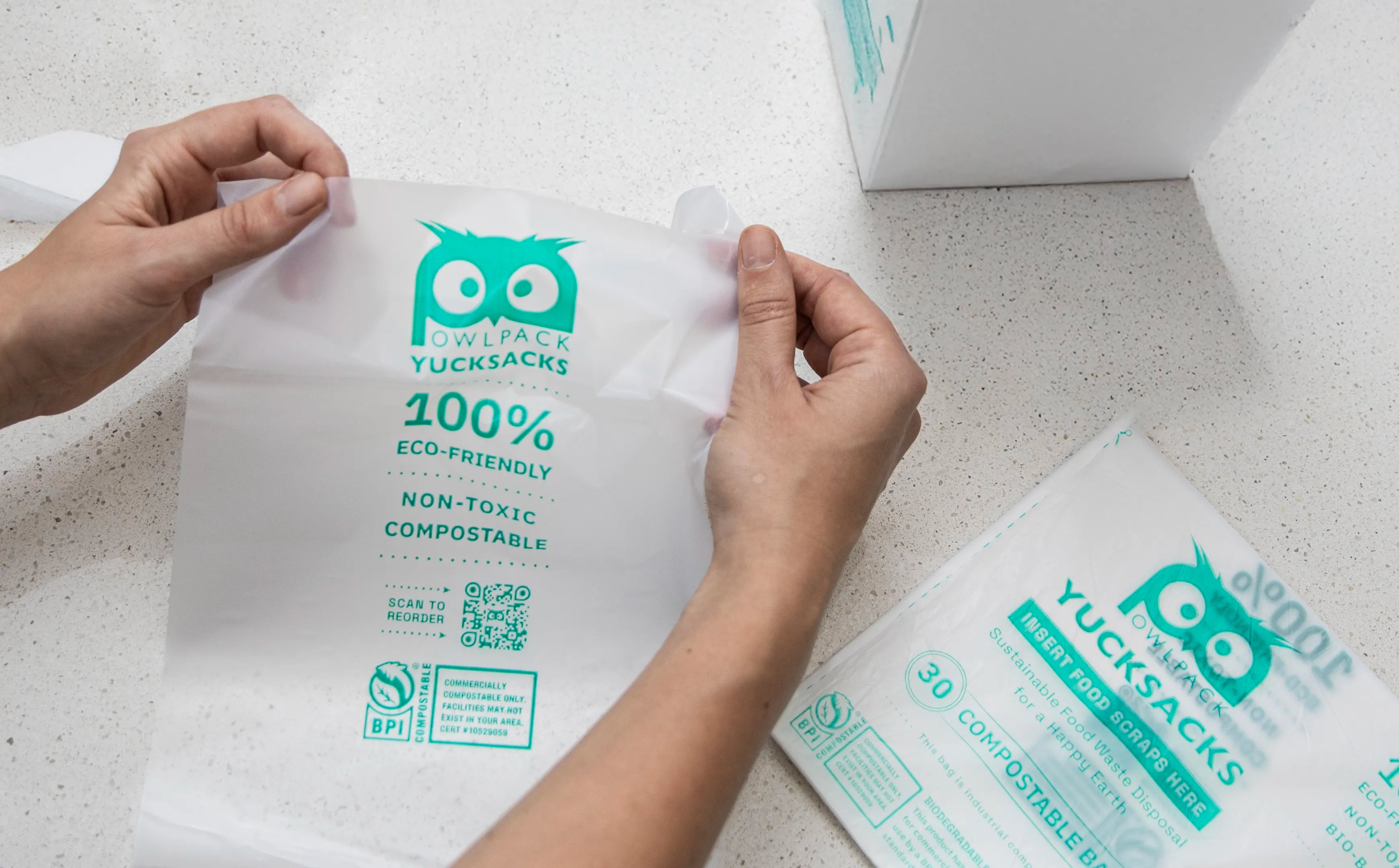The Lifecycle of a Compostable Bag: From Corn Starch to Soil
What really happens to a compostable bag after you toss it in the green bin? Unlike conventional plastic bags that can linger in landfills for centuries, compostable bags are designed to break down and return to the earth—leaving behind nothing but goodness for the soil.
In this post, we follow the journey of a certified compostable bag—like Owlpack’s Yucksack Bags—from renewable beginnings to its final return to nature.
—
Step 1: Sourced from Plants
Compostable bags don’t start in oil refineries like plastic ones—they begin in the field. Most are made from renewable crops like:
-
Corn
-
Cassava
-
Potato starch
-
Sugarcane
Owlpack Yucksack Bags, for example, are made using non-GMO corn starch and plant-based polymers—renewable resources with a lower carbon footprint than petroleum.
—
Step 2: Manufacturing the Bag
After harvesting, the plant material is processed into a natural polymer resin. It’s then shaped into rolls of film and converted into bags. The result?
-
Soft, breathable material
-
Strong enough to handle daily waste
-
Certified to break down safely in home and industrial composting systems
These bags are designed to mimic plastic in function—but behave completely differently after disposal.
—
Step 3: Everyday Use
At this stage, you use the bag to collect food scraps, paper towels, and other compost-safe items. Compostable bags:
-
Help control odors
-
Keep your bin clean
-
Reduce the “ick” factor of composting
Pro tip: Replace your compost bag every 2–3 days to prevent early breakdown or leaking.
—
Step 4: Entering the Composting Environment
Once full, your compostable bag should go to:
-
A home compost bin (if conditions allow), or
-
A municipal green bin or industrial composting facility
At this point, heat, moisture, oxygen, and microbes start doing the heavy lifting. Certified compostable bags like Owlpack Yucksack Bag begin to break down—typically within:
-
90 days in industrial composting
-
Up to 180 days in home composting
Unlike traditional plastic, these bags don’t just fragment—they fully biodegrade into natural materials.
—
Step 5: Transformation into Compost
As decomposition continues, the bag turns into:
-
Carbon dioxide (CO₂)
-
Water
-
Biomass (aka nutrient-rich compost)
No microplastics, no toxic residue—just clean, fertile compost that helps plants grow. The material becomes part of the soil food web, nourishing gardens, parks, farms, and more.
—
Final Step: Back to the Earth
The cycle is complete. What began as a corn kernel or sugarcane stalk has now returned to the soil, enriching it naturally.
It’s not just disposal—it’s regeneration.
—
Final Thought: A Bag with Purpose 🌿
Understanding the lifecycle of a compostable bag helps you see the bigger picture. It’s not just about throwing something “away”—it’s about sending it on a journey that ends in renewal.
At Owlpack, we’ve designed our Owlpack Yucksack Bags to honor that cycle. Made with plants. Built to break down. Ready to return to the earth.
Ready to make the switch? Let nature do the rest.



Share:
15 Easy Plastic‑Free Swaps for Everyday Living
Why Some Cities Reject Compostable Plastics—and What You Can Do